Community Science on the Hooch
Protecting the Chattahoochee Watershed and its Residents from Atlanta’s Combined Sewer Overflows
By Kristen Downs and Jeremy Diner
Categories – infrastructure, government
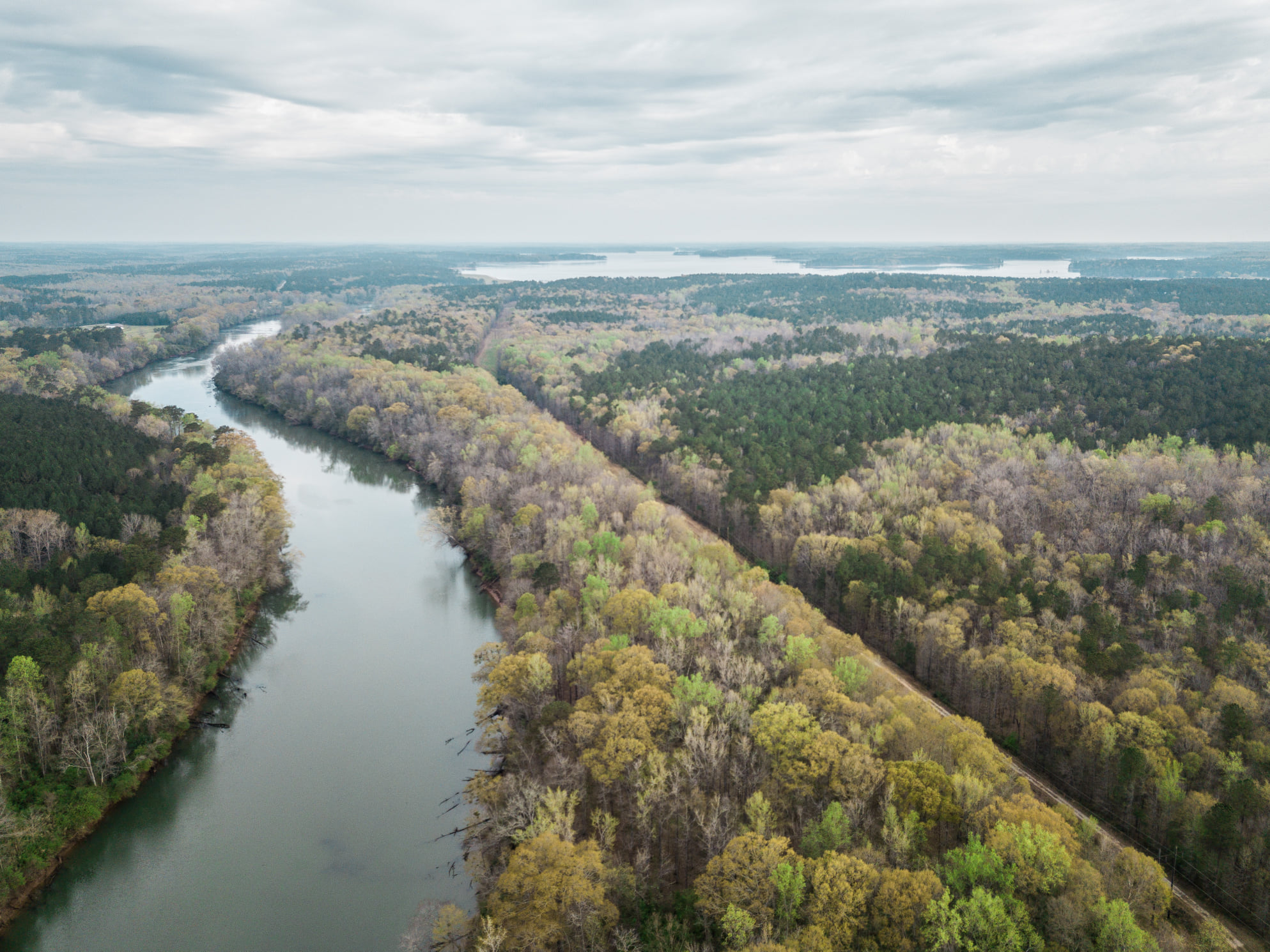
Chattahoochee Riverkeeper
Established in 1994, Chattahochee Riverkeeper (CRK) is a non-governmental and community science organization based out of Atlanta, GA that is dedicated to the protection, preservation, and stewardship of the Chattahoochee River and its watershed. In addition to strategies of education, research, clean-up events, advocacy, and legal action, CRK uses water quality data that is collected through their volunteer Neighborhood Water Watch (NWW) program and analyzed in three in-house laboratories to monitor the River’s water quality. Water quality issues are identified, reported to, and resolved in cooperation with the City of Atlanta and other wastewater entities. Over the last two and a half decades, the work of CRK, the communities in which they work, and the City of Atlanta have and continue to create a cleaner Chattahoochee River that attracts more recreation, wildlife, and economic development.
Former Atlanta Mayor Shirley Franklin said of the $2.06 billion spent by the City on sewer and stormwater infrastructure: “those investments have yielded nearly $18 billion in new public and private investment.”
The Chattahoochee River, part of the Apalachicola-Chattahoochee-Flint (ACF) Basin, is the lifeblood for communities across Georgia, Alabama, and Florida and one of the region’s hardest working waterbodies. Originating from headwaters in the Appalachian Mountains in Northern Georgia, this highly contested 430-mile[1] river flows through and sustains Metro Atlanta by providing drinking water to more than 70% of its population (over 5 million people) and supporting multiple industries. The Chattahoochee River then flows on to supply water to many communities, industrial facilities, agricultural operations, power generation, and ecosystems along the Georgia-Alabama border before joining with the Flint River to form the Apalachicola River and emptying into the Gulf of Mexico, where it supports a fragile shellfish industry. Over the last 25 years, the Chattahoochee River is in better condition today because the River’s clean water history is a direct result of wise economic decisions and environmental protections.
Chattahoochee Riverkeeper (CRK), formerly Upper Chattahoochee Riverkeeper, has been keeping watch over the Chattahoochee River since 1994. At that time, the data was clear; the river had a major problem. Water quality was so poor after it ran through Atlanta that the State of Georgia would not permit direct water withdrawals between Atlanta and West Point, 67 miles downstream. In 1995, CRK and downstream parties sued the City of Atlanta for U.S. Clean Water Act violations over the combined sewage that reached the Chattahoochee River during heavy rainfall events from the West Area combined sewer system. In 1998, this hallmark lawsuit triggered a multi-billion-dollar Federal Consent Decree on the City of Atlanta’s behalf to develop and implement a solution to eliminate water quality violations from combined sewer overflows (CSOs) by 2007 and, according to its 1999 amendment, sanitary sewer overflows (SSOs) by 2014.[2] The concerted action triggered by the Consent Decree between the City of Atlanta, Chattahoochee Riverkeeper, and other parties has been largely effective. In 1994, the City of Atlanta had been experiencing 50-70 combined sewer overflows (CSOs) per year in the West Area. Following this big push to clean up the river, there were 9 CSOs between 2009 and 2019 in the West combined sewer area that flows to the Chattahoochee.[3]
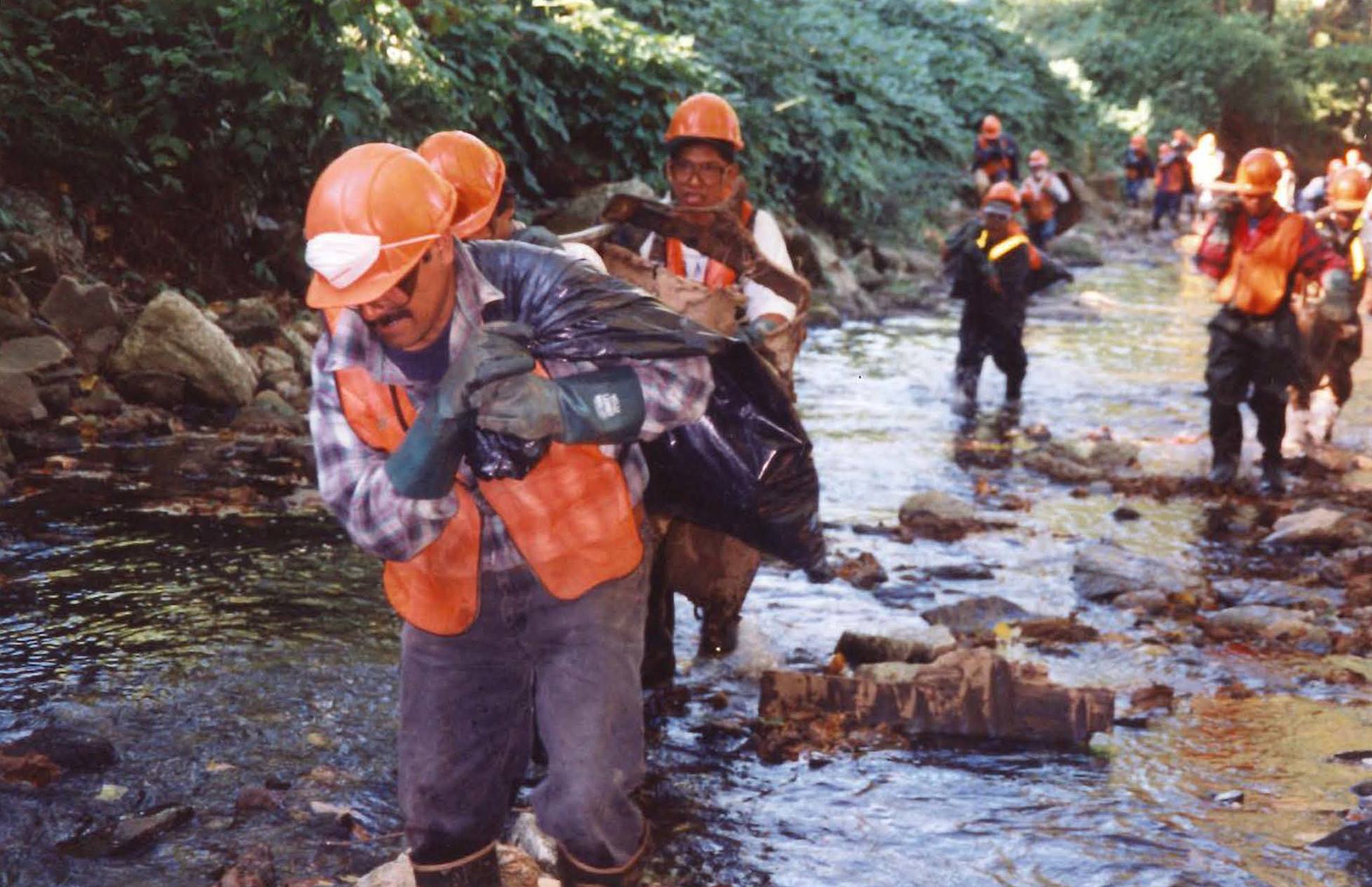
Figure 2: The Consent Decree included an accelerated suite of activities by the City of Atlanta to improve water quality, including combined sewer separations and river cleanup efforts, as a result of the 1995 lawsuit by Chattahoochee Riverkeeper and other downstream actors against the City of Atlanta. Photo credit: Chattahoochee Riverkeeper.
But this is not just a story about a city’s laudable clean-up efforts. This is a story about the community that stepped up to finish the job once the bulk of the work was concluded, the water quality monitoring program that demonstrated the power of data and pulled it all together, and the partnerships that have developed to clean up Atlanta’s waterways along the way.
Neighborhood Water Watch
In 2010, CRK launched Neighborhood Water Watch (NWW), a program primarily designed to help residents of the region to:
- learn more about the condition of the waterways running through their neighborhoods,
- respond to threats indicated by water quality test results, and
- transition their perceptions of the river from a cesspool with a dirty history to a new and improved Chattahoochee watershed, which is safe for recreation and offers outdoor pursuits including paddling, bird-watching, and fitness.
“Pollution tracking teams confirm the location of [the] contamination source with water quality tests and on-the-ground field inspections.… Once the location of the issue is confirmed and entity responsible for upkeep and repairs is identified… [and] notified, though [CRK] staff are available to any response teams on-site and provide additional details, we turn over the issue to the responsible entity. We then follow-up with tests, visual inspections, and photo documentation to confirm the issue has been properly addressed. We also let the public know we have discovered an issue and provide a status report on repairs through social media and other conduits.”
-Mike Meyer
NWW Program Director, Chattahoochee Riverkeeper
NWW is a volunteer-based water quality monitoring program in which CRK trains individuals and partner organizations to measure and improve water quality in urban streams. From small beginnings, NWW has grown to engage over 120 volunteers and partners who are collecting weekly water samples at 190 stations along urban creeks and the river’s mainstem. When a water quality issue arises, CRK’s pollution tracking teams identify the contamination source, contact the entity responsible for maintenance and repairs and turn over the issue to them, follow-up, and inform the public with status reports. From its inception in 2010 through 2019, CRK volunteers and partners have collected more than 29,400 water samples, conducted more than 705 investigations of pollution sources, and found and addressed 112 sewer spills—stopping millions of gallons of raw sewage from contaminating public waterways. In 2019 alone, NWW took 4,400 samples and discovered and stopped 22 major sewer spills.[4] (View NWW’s water quality data here.)
Considering that many of the most polluted waterways in Atlanta are in underserved minority or low-income neighborhoods, environmental justice is a big motivator for this project. NWW amplifies the voice of these residents, who are passionate about protecting their backyard streams and communities, and helps to funnel money to the community to ensure the benefits accrue where they are intended. The organization ensures that education and engagement are incorporated at each level of training and participation. The training in water quality sampling teaches participants knowledge and vocabulary about water, as well as sampling and monitoring skills, and provides all the necessary equipment and supplies. Furthermore, need-based reimbursements of $15/sample are provided for volunteers in designated watersheds.
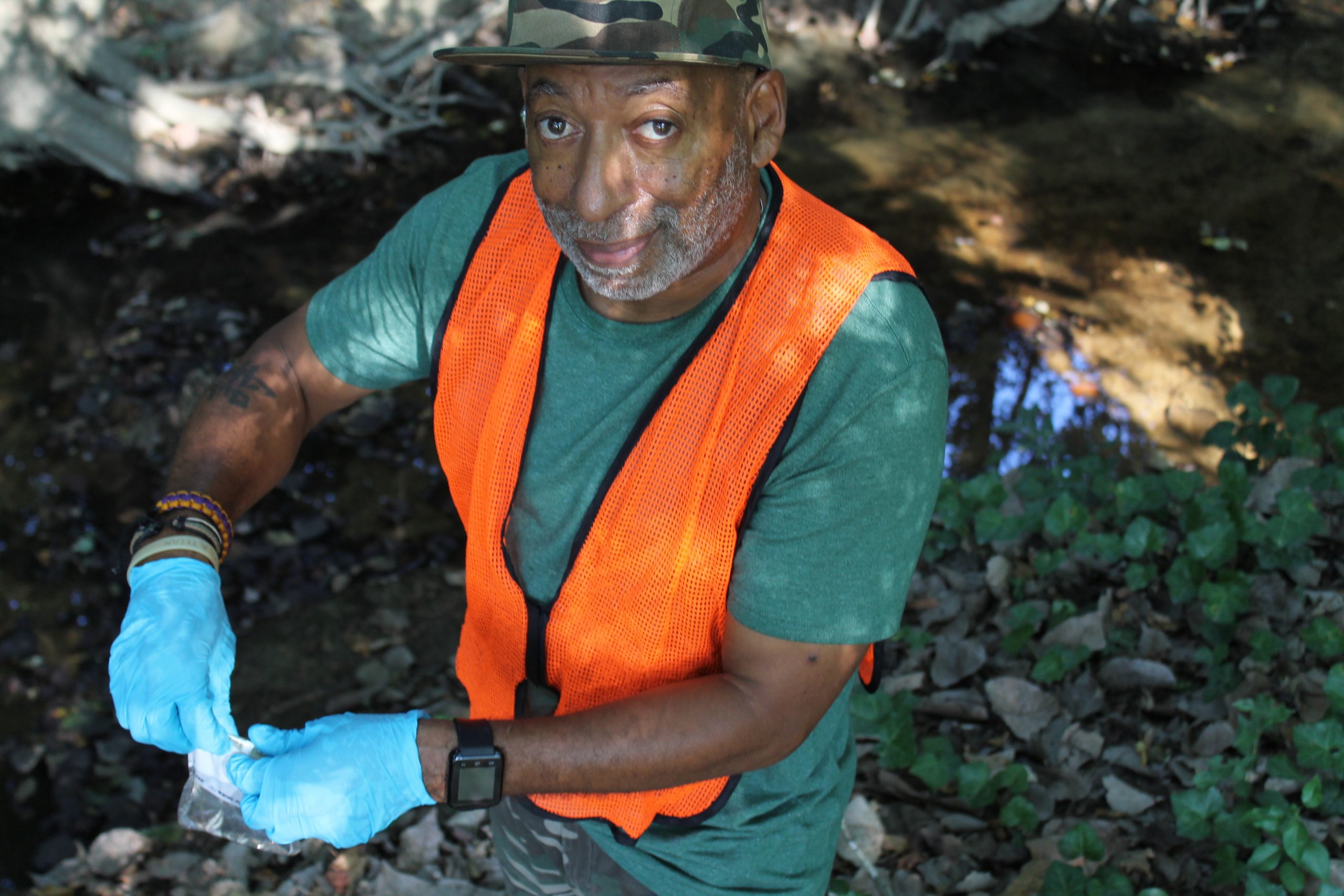
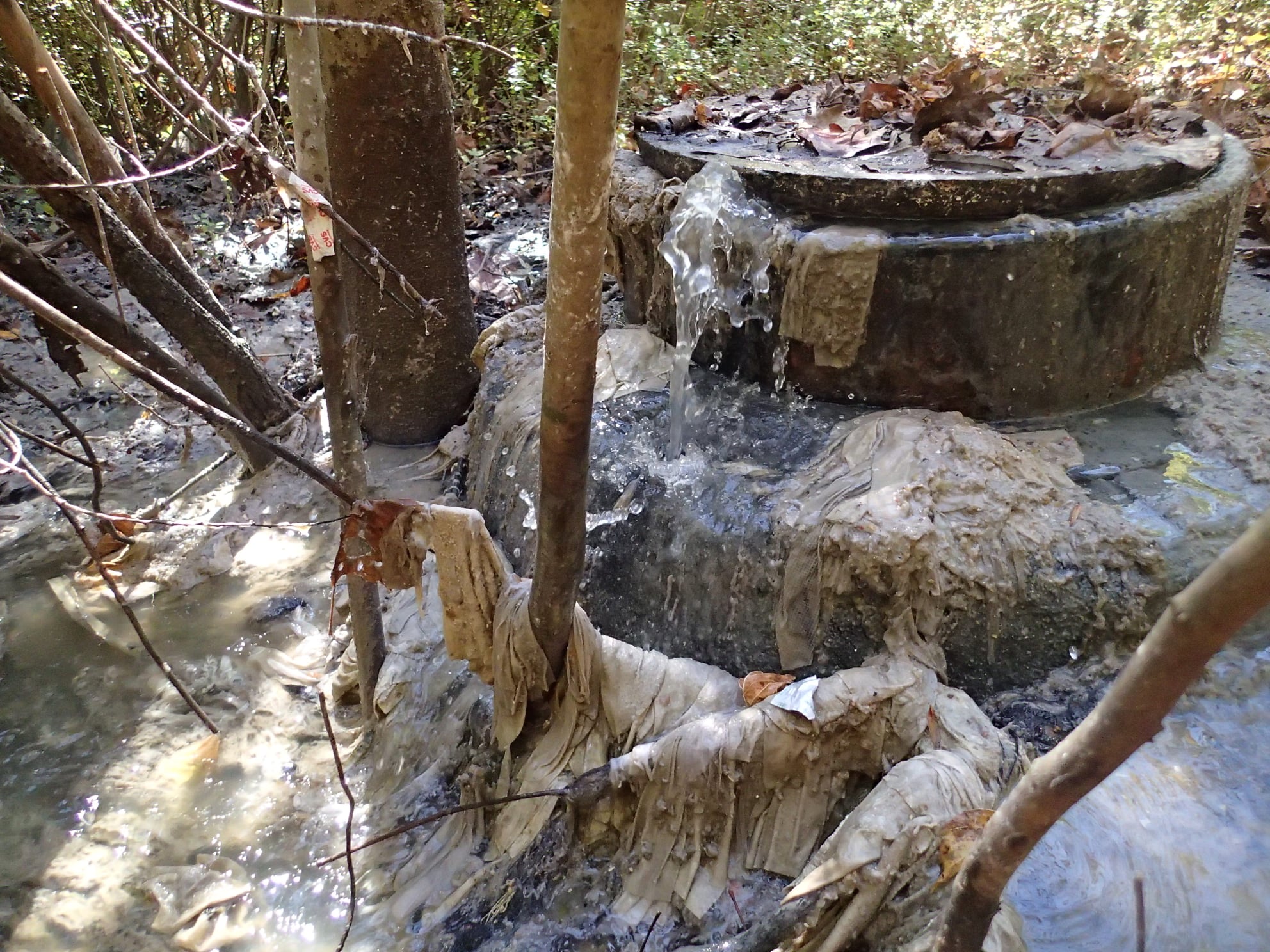
Figure 3: A Neighborhood Water Watch (NWW) volunteer (right) collecting a grab sample from a tributary of the Chattahoochee River to be analyzed for its water quality (top panel). Pollution sources such as combined sewer overflows (CSOs), sanitary sewer overflows (SSOs), and contaminant-carrying stormwater runoff (middle) can be identified through NWW’s water quality monitoring, muddy water tracking, and the Chattahoochee Riverkeeper (CRK) tipline, to which anyone can report a water problem. Following source tracking and identification, pollution events are reported by CRK to the relevant authorities for response. (left) Photo credits: Chattahoochee Riverkeeper.
Volunteers are trained to bring samples to one of CRK’s three state-of-the-art in-house laboratories. There, water samples are analyzed for turbidity, conductivity, optical brighteners, and E. coli bacteria while adhering to U.S. Environmental Protection Agency (EPA) laboratory and testing standards. Any threats indicated are tracked, identified, and reported to protect public health and restore our public waterways. On a weekly basis, quality-assured data is uploaded to NWW.chattahochee.org, Georgia’s Adopt-A-Stream database, and EPA’s WQX database.
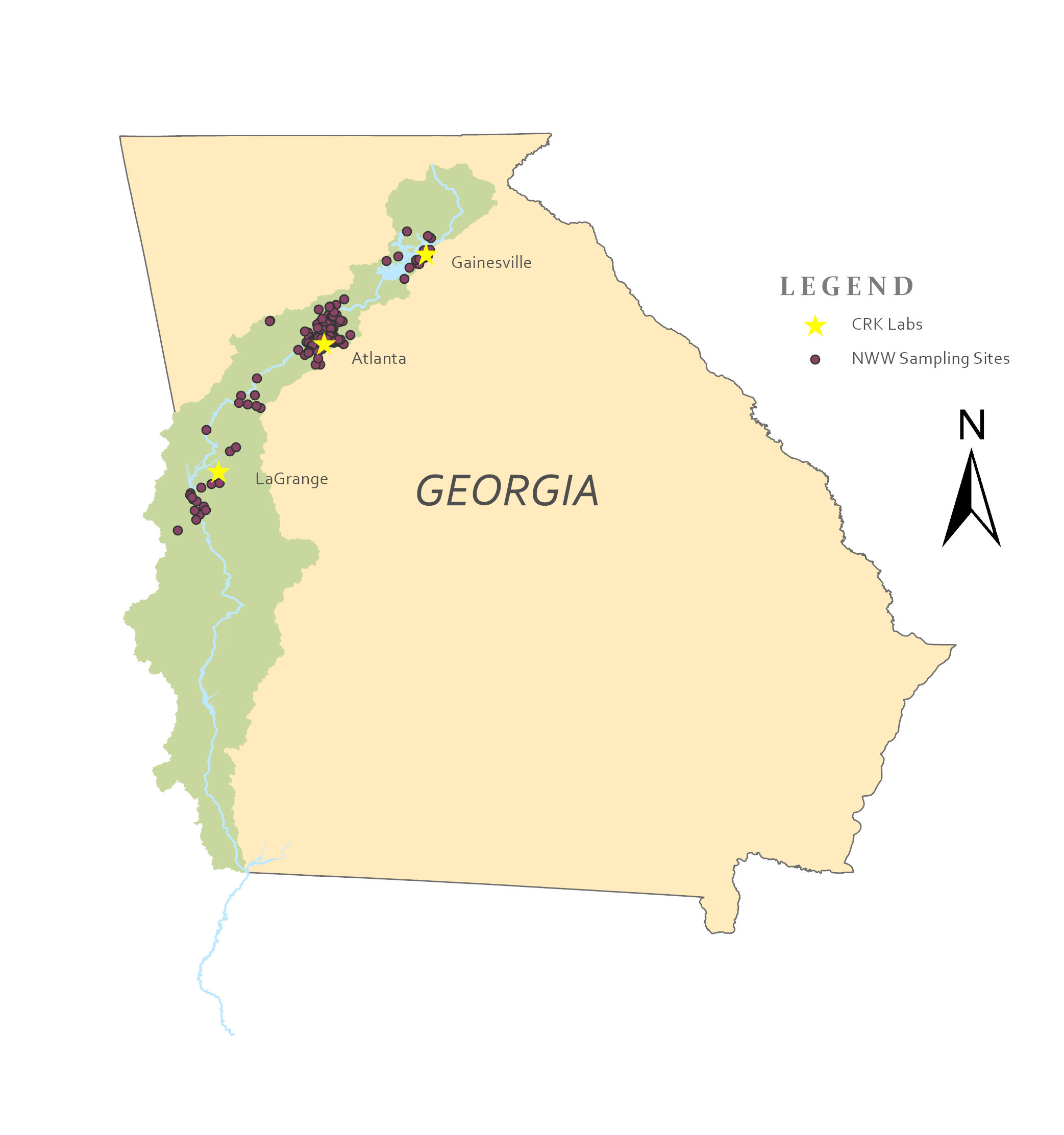
Figure 4: Map of the Chattahoochee River Basin in Georgia, Alabama, and Florida. Three Chattahoochee Riverkeeper (CRK) labs in Gainesville, Atlanta, and LaGrange test multiple water quality parameters (E. coli, turbidity, conductivity, and optical brighteners) from 190 active Neighborhood Water Watch (NWW) monitoring sites across the basin. NWW’s water quality data is available here. Map credit: Chattahoochee Riverkeeper.
Case Studies
Greensferry Basin
One of the first sewer separation projects the City of Atlanta implemented as required by the Consent Decree took place in the Greensferry Basin’s combined sewer area in 2007.[5] In the City’s first pass of the 26 miles of sewer lines they inspected, they disconnected 976 sewer pipes from the pipe network to decrease CSO water quality violations. The water quality issues, nevertheless, persisted. The City had not tested the creek once the disconnections were completed and CRK suspected that some illegal sewer connections may have been missed. NWW volunteers collected 415 water samples over the course of several years and used the data to convince the City to revisit the Greensferry area and conduct a $2+ million investigation. Ultimately, 30 additional illegal sewer connections have been found and disconnected, stopping most of the flow of sewage from Greensferry into the Proctor Creek tributary. The Proctor Creek watershed, which flows into the Chattahoochee, remains above the EPA’s water quality recommendations for swimming and recreation in surface waters (<235 MPN/100mL)[6], but after a decade of NWW monitoring, there’s been a 83% reduction in the annual geometric mean of E. coli between 2012 and 2019 (Figure 6).[7] (In addition to NWW’s water quality data, view real-time conductivity and temperature at Proctor Creek from the Chattahoochee Aquatic Sensor System Integrated (CASSI) program here.)
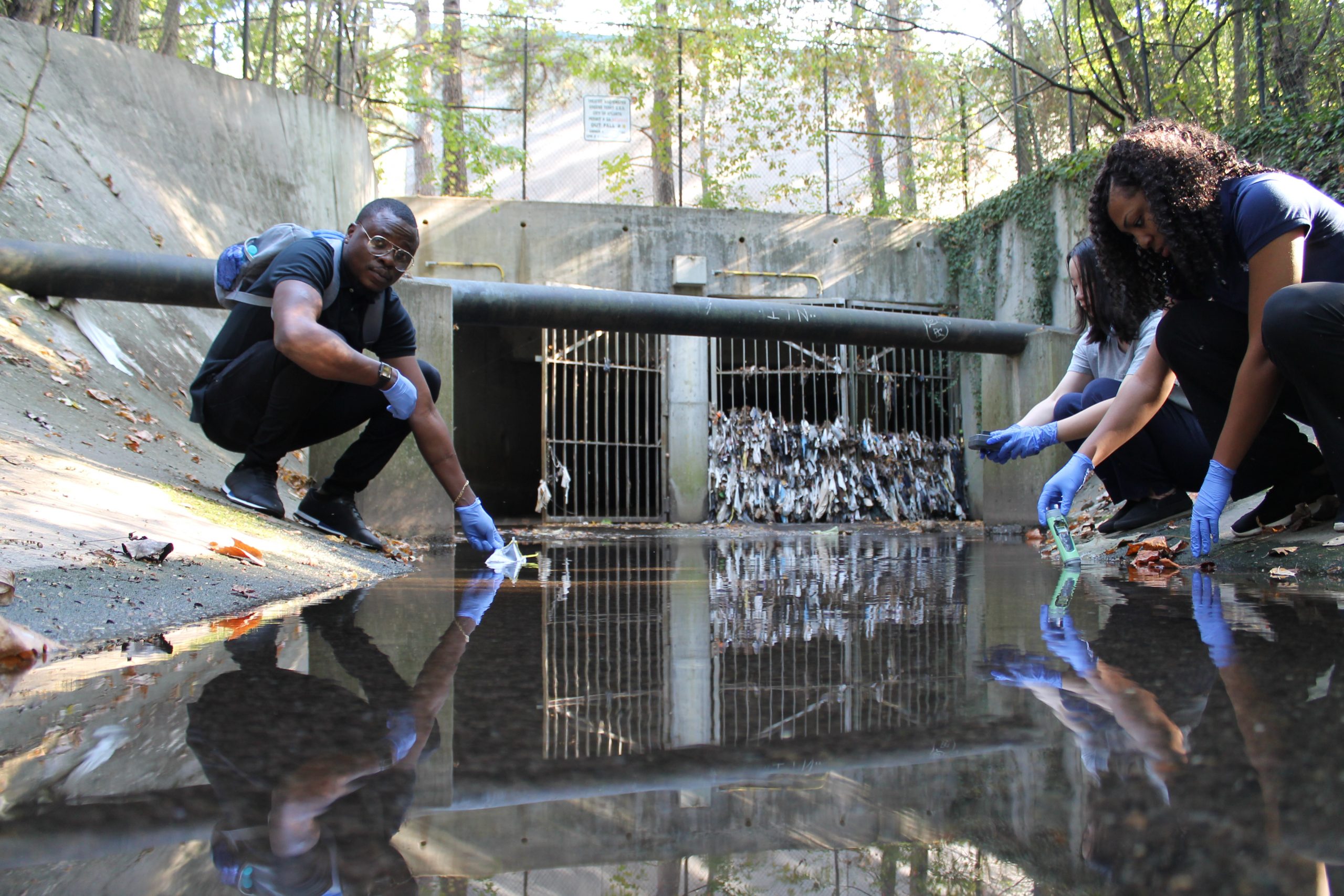
Figure 5: Chattahoochee Riverkeeper interns collecting water samples in October 2016 at a Greensferry decommissioned combined sewer location. Photo credit: Chattahoochee Riverkeeper.

Figure 6: Geometric mean of annual E. coli levels (MPN/100 ml) in Proctor Creek tributary at Greensferry (2012-2019) after the initial sewer separation by the City of Atlanta. Data source: Chattahoochee Riverkeeper.
Utoy Creek
Problems are easiest to identify by analyzing data collected over a period of time. NWW shows the value of long-term regular monitoring versus a one-off response to a single sample. In many locations, the Georgia Environmental Protection Division’s testing occurs one month out of every five years, which doesn’t allow the granularity needed to observe problems or trends. In 2018, NWW volunteers helped uncover six sewage spills in Utoy Creek, a tributary to the Chattahoochee. In one case, the data showed that bacteria levels were slightly and consistently elevated over the background for two weeks. This prompted NWW Program Director Mike Meyer and his inspection team to go out and track down the source, which turned out to be a broken 36” sewer pipe uprooted by a tree tossed during a storm. Mike reported the massive sewer spill to the City of Atlanta, who came out within 15 minutes to address the issue. Follow up testing by NWW confirmed the City’s repair efforts were effective in stopping the spill and water quality returned to baseline conditions.
Success Factors
Strong Relationships
One interesting aspect of this story is the evolving relationship between CRK and the City of Atlanta; what began with a lawsuit has become a partnership characterized by mutual respect and cooperation. Understandably, there was a big trust gap when this project started, but today if CRK reports a water quality violation, City officials respond quickly to investigate. This type of relationship is possible for multiple reasons. First, CRK has a history of using high quality data to report verified incidents, but staff will tell you that it is equally important that they communicate respectfully. Second, the City has a legal responsibility to fulfill the Consent Decree’s requirements and to prevent pollution from entering the Chattahoochee and its tributaries. CRK collects water quality data that confirms the City’s investment in infrastructural improvements and compliance with the Consent Decree, and the data enables CRK to detect and report water quality issues to the City as they arise. After 20 years of working together, these unlikely partners understand that they often want the same thing: a cleaner Chattahoochee River.
CRK’s relationship with the West Atlanta Watershed Alliance (WAWA) has been a major key to connecting with residents and activating volunteers to collect samples. Since 1995, WAWA has been working in underrepresented and underserved neighborhoods in the Proctor, Utoy and Sandy Creek watersheds in West Atlanta to protect greenspace and water in their communities. CRK’s and WAWA’s technical expertise and community connections have resulted in real water quality improvements in Utoy, Proctor, and Sandy Creeks.
Considering the Entire Data Life-Cycle
Program Design
CRK benefits from having written protocols and procedures approved by the EPA. The data collection is guided by an approved Quality Assurance Project Plan (QAPP), which was developed with support from an EPA Urban Waters Small Grant as part of NWW’s expansion. Having this EPA-approved procedure is an important instrument to build trust with those, like the City of Atlanta, who consider whether to use CRK’s data to inform their decision-making and complement their own data. Having quality-assured data also facilitates regular data sharing with NWW.chattahochee.org, Georgia’s Adopt-A-Stream database, and EPA’s WQX database. Drawing from a decade of experience with NWW, CRK shares guidance, training, and materials for other organizations nationwide that wish to replicate NWW in their watersheds.
The Volunteers
With 190 active monitoring stations that span north of Gainesville to south of Columbus, GA, volunteer participation is integral to the NWW program’s success, growth, and impact. Volunteers are the eyes and ears of NWW, providing a wealth of local knowledge and creating the link between water sampling and substantive action that results in improved water quality across the watershed. NWW volunteers contribute 5,000 person-hours annually and currently include 120 (90 in Atlanta) water sample collectors who have worked with CRK for one or more years. Volunteers are trained in proper sampling and handling techniques to collect and deliver water samples to CRK’s laboratories. Training encourages a conversation between volunteers and CRK, while providing community members with all the necessary tools to care for a waterway that they already value. Not only do the volunteers make regular and on-going monitoring possible, but they are also the intended recipients of the program’s benefits. As such, CRK encourages and prioritizes their engagement at all levels, from the field to the non-profit’s Board of Directors and Advisory Board.
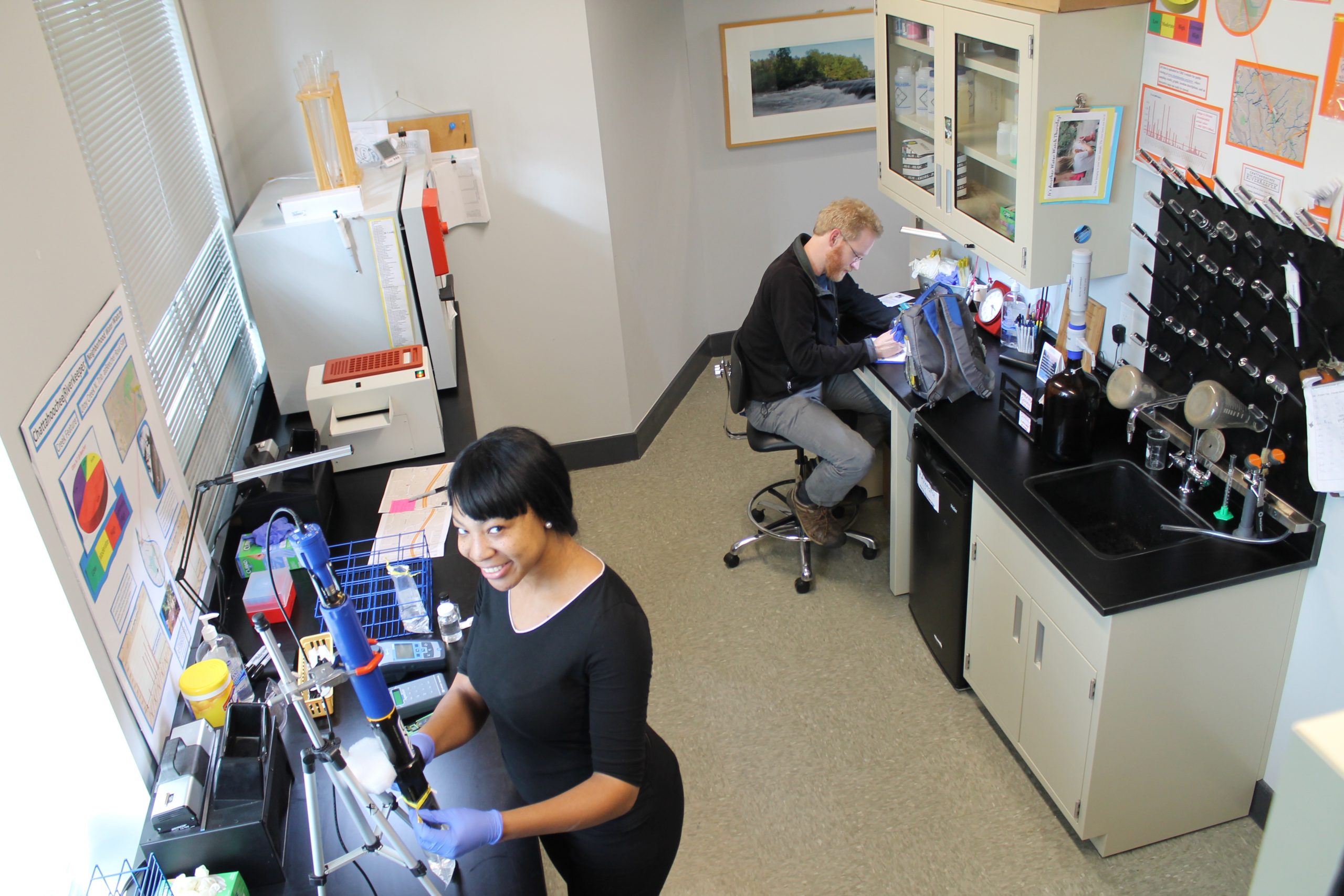
Figure 7: A member of the Neighborhood Water Watch (NWW) program brings water samples to the CRK lab to test each week (on right). Water samples then undergo E. coli, turbidity, conductivity, and fluorometry testing by trained staff and interns at one of CRK’s 3 state-of-the-art water quality labs (on left). Photo credit: Chattahoochee Riverkeeper.
The Lab
CRK has three state-of-the-art water quality laboratories located in Gainesville, Atlanta, and LaGrange, which are open for public viewing during the week. The labs are operated by 3-6 dedicated and supporting staff from CRK and 1-8 trained interns, who analyze the water samples collected by 120 community volunteers and organizations. CRK is rigorous and regimented about their lab space and procedures, requiring that all laboratory staff and interns read and learn proper sample handling and testing procedures provided in CRK’s EPA-approved Quality Assurance Project Plan (QAPP). Lab staff and interns are responsible for all water quality tests, laboratory activities, site inspections, and follow-up sampling. Once a water quality problem is identified in the lab, CRK staff conduct stream walks to physically track the issue to its source in the field, where they may take additional samples. CRK then communicates with utilities to fix the problems as needed.
CRK has collected and tested over 25,000 water samples in the last 10 years and invested in developing and staffing three water quality labs instead of sending their samples to private labs for testing. The in-house labs offer multiple advantages to CRK compared to the additional expense of paying $45 per sample for private laboratory testing with a 5-day turnaround. CRK can test a water sample for E. coli bacteria, turbidity, conductivity, and optical brighteners by fluorometry within 18 hours after collection for $10/sample in out-of-pocket expenses plus staff time. More importantly, though, are the non-monetary benefits of integrating the NWW program with in-house water quality testing. The in-house labs allow all of NWW’s services to be streamlined together for $200,000 per year for the entire NWW program, including laboratories:
- volunteer recruitment, community engagement, and public education by CRK staff,
- water quality sampling and river clean-up activities by volunteers,
- water quality testing,
- problem and source identification including follow-up sampling,
- reporting of identified issues to the responsible wastewater entity,
- follow-up inspections and documentation to ensure issues have been addressed, and
- providing information to the public on water quality issues and their resolution.
Ultimately, NWW’s comprehensive activities and services facilitate environmental quality improvements to the Chattahoochee River Basin with the support of high-quality water quality data.
The Database
The CRK database has thousands of water quality data points that enable CRK to look for trends, deviations from baselines, geometric means, and historic data. Familiarity with the river’s baseline metrics coupled with external data such as U.S. Geological Survey (USGS) streamgages or weather forecasts enables more advanced analyses and can help detect anomalies or the impacts of environmental changes, such as how dam releases might impact bacteria counts. The data also strengthens partnerships with entities such as Georgia State University, which is both a data user and a partner that funds graduate students to perform analyses.
Value to the River and Beyond
While it is not trivial to measure the value of people avoiding illness or the value of an engaged community protecting their watershed, there are some impacts that can be more readily measured. Over 25 years, CRK raised $28 million, enabling them to do work that has resulted in $2.2 billion in third-party investments to protect the Chattahoochee River. For example, this includes $2 billion in spending by the City of Atlanta[8], $1.9 million by the USGS (on BacteriALERT stations that are part of a long-term partnership with CRK), and municipal investments in local sewer system and water treatment plant upgrades. Every $1 invested in CRK has resulted in at least $80 in benefits.[9]
CRK, the City of Atlanta, and many others have worked to reduce average bacterial levels in the Chattahoochee River by 80% over the last three decades. And the impact goes well beyond improving water quality. Changes are evident in how the community interacts with the river, with benefits accruing for people’s livelihoods, neighborhood revitalization, water supply, and recreation.
Livelihoods
For some community water quality monitors, NWW has given them purpose and a voice. One volunteer reported, “The first time I did it, I felt so good. My heart was soaring. I had just retired, and I felt like I actually did something.” Another said, “This has become a very important thing to me, I didn’t expect it to impact me this way. I took to this thing and I absolutely enjoy sampling the water and bringing it back to learn what’s in it… in my community where I know three of the samplers, we probably found five or six [contamination issues]. If it wasn’t for us out here doing this, we wouldn’t know half of what’s going on in our waterways.” Beyond cleaner waterways, this program provides a meaningful activity for residents to participate in, one that brings neighbors together for a greater good.
Water Supply
Prior to CRK’s clean-up efforts, the Georgia Environmental Protection Division (EPD), the state’s environmental regulatory agency, did not allow direct water withdrawals from the river for 67 miles between the City of Atlanta and West Point Lake. Today, there is one proposal from communities in south Fulton County under review and the Coweta County Water & Sewerage Authority is interested in submitting a second proposal.
Neighborhood Revitalization
In contrast to the polluted and neglected neighborhoods of the 1990s along the river, environmental improvements are leading to increased economic development and investment in the area. People have come to the river to paddle and picnic, and its attraction has renewed interest in commercial and residential development. For example, renewed development at Riverview Landing has resulted in new apartments and a brewery built near a river access point, with more development expected in the coming years.
“We have a lot of eagles nesting, osprey flying up from West Point Lake. People love it. We see a couple thousand people paddling this stretch each year.”
Chris Chastine, Whitewater Learning Center of Georgia
Recreation
Beyond development, success can also be measured in terms of how many people are using the river for paddling, swimming, fishing, or other types of recreation. The State of Georgia has recently been considering the new use designation of Recreation, which implies greater regulatory protections, for the 76 miles of river between Peachtree Creek—Atlanta’s wastewater discharge location and once a major source of pollution—and West Point Lake. This stretch of river now attracts wildlife and people alike. In 2018, CRK documented 1,800 paddlers and 89 trips organized by CRK and other organizations and supported their appeal with over 500 signatures and comments from residents who have gone swimming, paddled, and fished near Chattahoochee Bend State Park.[10] In response, the State of Georgia proposed a new use designation of Recreation for 13 miles along the river. The conversation between the EPD and CRK continues as CRK is requesting the Recreation designated use also be extended to the remaining 63 miles, using river-use data to justify the increase.
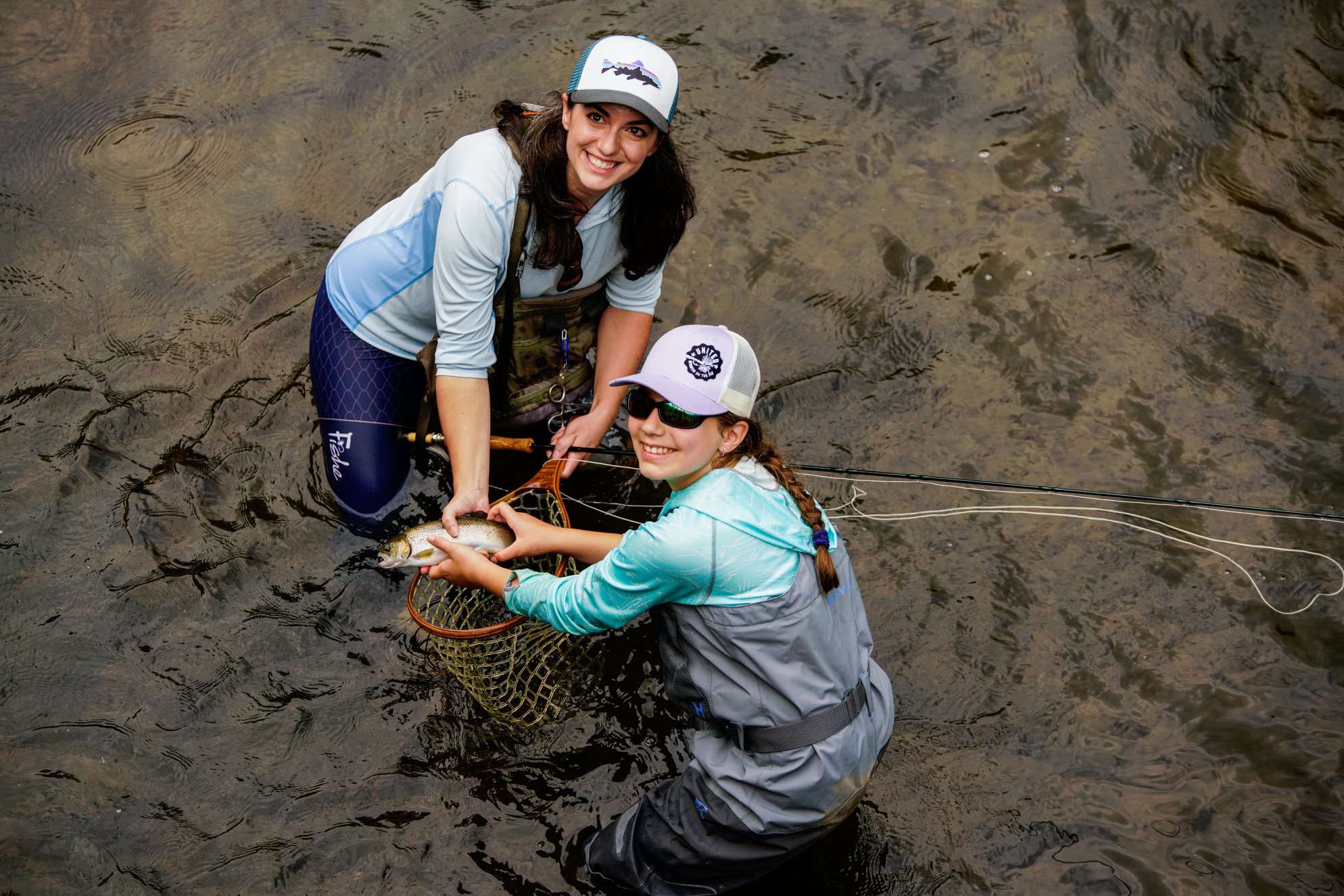
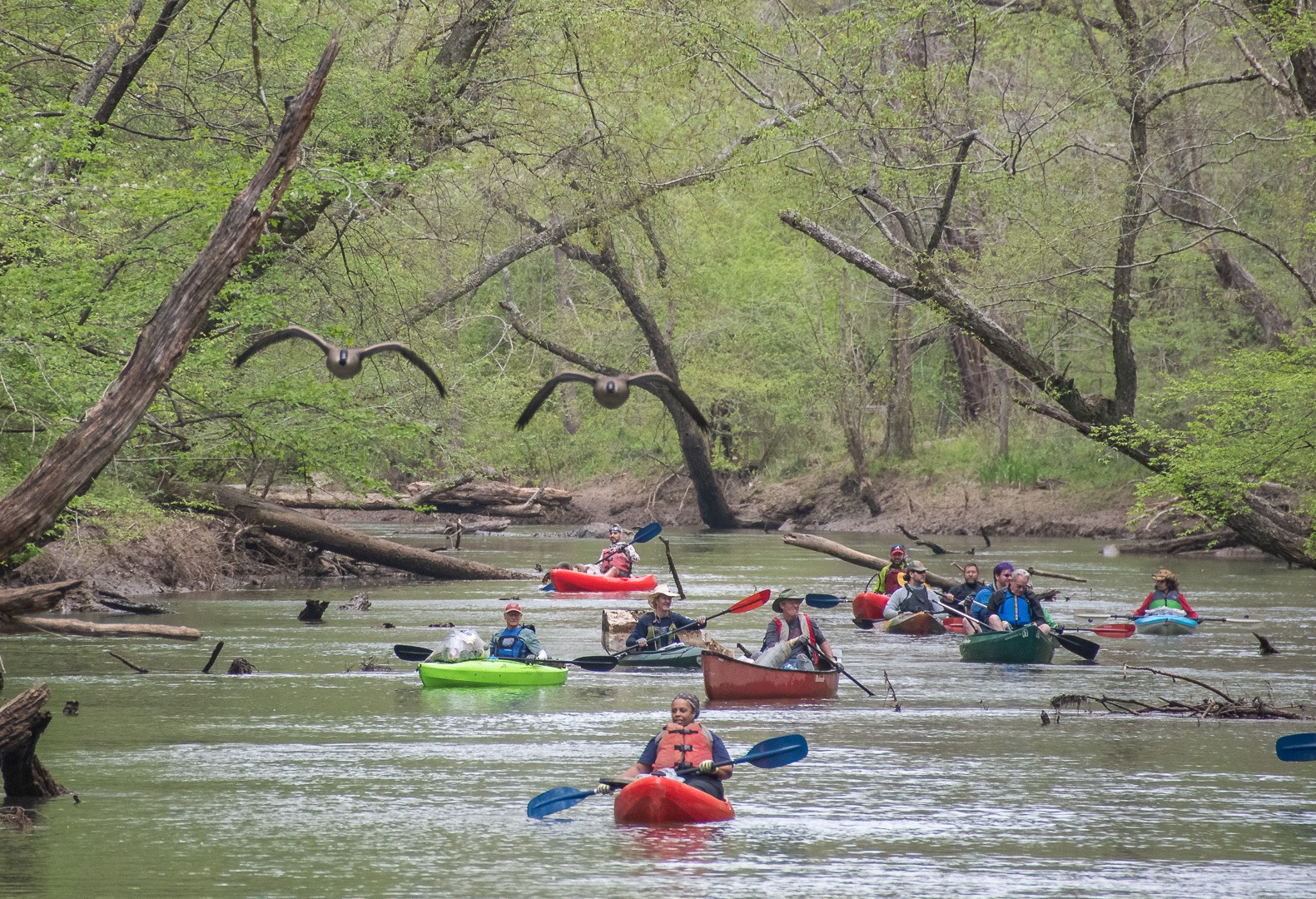
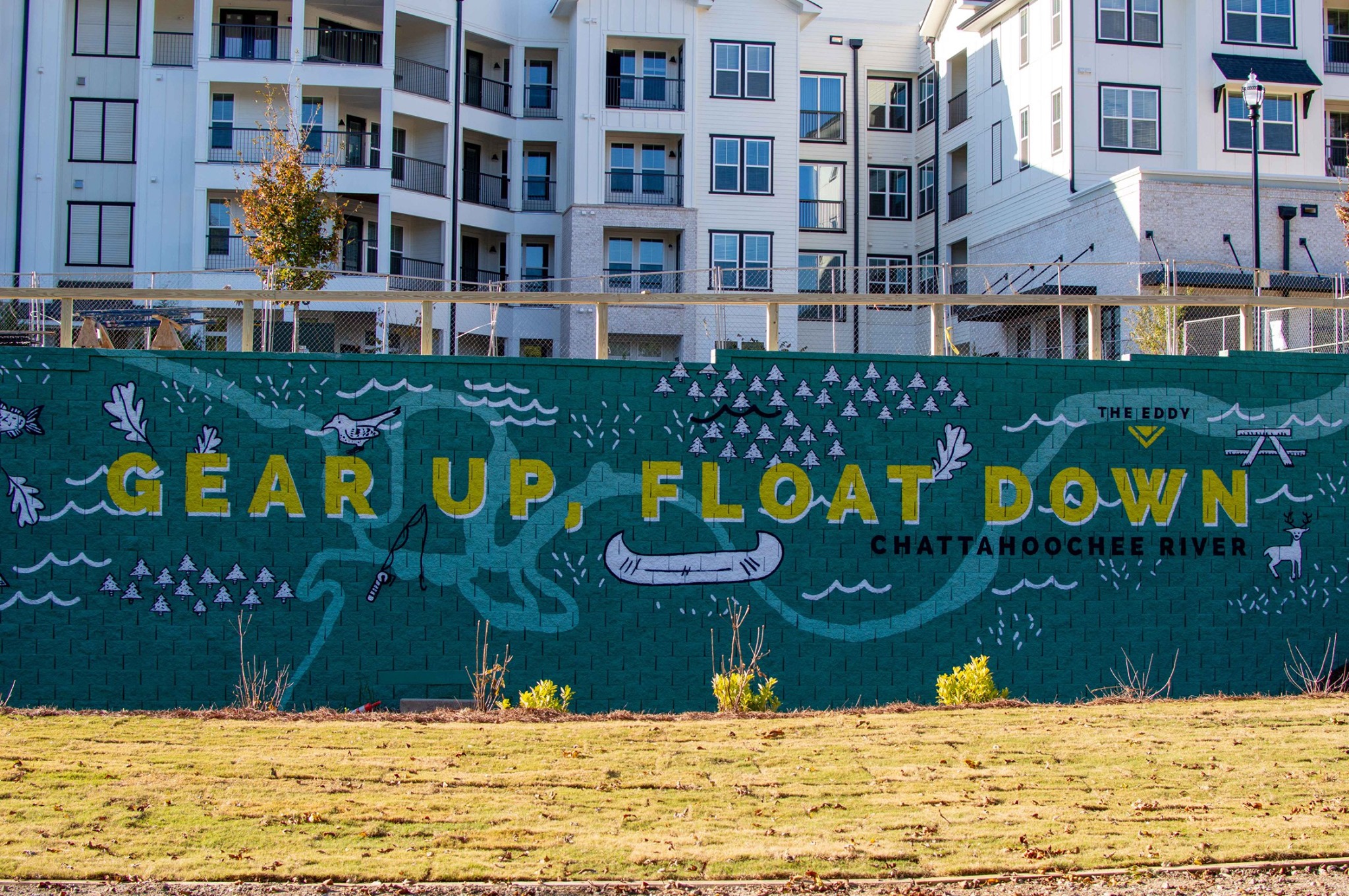
Figure 8: The appeal of fly fishing (right), kayaking (middle), and riverfront development (Riverview Landing shown in left) in Atlanta in and along the Chattahoochee River has increased as a result of the river’s water quality improvements. Photo credits: Chattahoochee Riverkeeper.
Looking Forward
NWW is nationally recognized as a premier model for community-based water protection, but the program does not represent the full picture of the energy, activity, and resulting data that is produced in and around the Chattahoochee River. There are countless agencies and organizations that are monitoring water quality and quantity in the Apalachicola-Chattahoochee-Flint (ACF) basin, and all of that data is valuable. CRK and the Internet of Water hope to collaborate in the coming years to open and integrate water data across the ACF, therefore assisting decision makers in the effort to achieve sustainable and equitable allocation of this contested resource.
Learn More
- Short video on the Neighborhood Water Watch program: https://vimeo.com/crkeeper/neighborhoodwaterwatch
- Citizens help fill gaps in local water quality monitoring: https://www.ajc.com/news/local/citizens-help-fill-gaps-local-water-quality-monitoring/a8JxhGf3HcdnIFNmpLVDrJ/
- Chattahoochee Riverkeeper’s Water Quality Monitoring Program: https://chattahoochee.org/our-work/water-quality-monitoring/
- Clean Water Atlanta: https://cleanwateratlanta.h2o4atl.com/
- How NGO’s are putting community science data to work nationally: https://waterdatacollaborative.org/
Connect
- Chattahoochee Riverkeeper
Acknowledgements
- Juliet Cohen, Executive Director, Chattahoochee Riverkeeper
- Chris Manganiello, Water Policy Director, Chattahoochee Riverkeeper
- Mike Meyer, Neighborhood Water Watch Program Director, Chattahoochee Riverkeeper
- Jessica Sterling, Technical Programs Director, Chattahoochee Riverkeeper
Questions/Comments?
Please direct all comments and inquiries about this data story to internetofwater@duke.edu.
For more information:
1Chattahoochee Riverkeeper. Fun Facts. https://chattahoochee.org/our-river/
2City of Atlanta (2010). Consent Decree Program Management: Overview. http://www.cleanwateratlanta.org/ConsentDecree/Overview.htm
3Combined sewer overflow (CSO) data were provided by Chattahoochee Riverkeeper.
4Sampling and sewage spill data were provided by Chattahoochee Riverkeeper.
5About Proctor Creek. Story of the Creek. https://aboutproctorcreek.wordpress.com/story-of-the-creek/; City of Atlanta (2010). Greensferry Basin Sewer Separation Project– Construction & Restoration Clean Water Atlanta. http://www.cleanwateratlanta.org/SewerSeparation/SewerSepInfo/Greensferry_Basin_SSP_Facts.pdf
6The recommended safe E. coli levels for swimming and recreation in surface waters are provided by the Environmental Protection Agency (EPA) (EPA (2012). Recreational Water Quality Criteria, p. 44). According to the EPA’s Beach Action Values (Table 5), the recommended level of E. coli in surface waters is <235 MPN/100mL, where above that level the rate of illness is estimated to be greater than 36 per 1000 primary contact recreators.
7Greensferry water sample and sewage connection data were provided by Chattahoochee Riverkeeper.
8The City of Atlanta invested $2 billion to overhaul its sewer system, pay penalties, fund supplemental environmental projects (such as greenway acquisition and trash clean-ups), and fund long term monitoring (email correspondence with Chris Manganiello on July 9, 2020).
9Chattahoochee Riverkeeper (2019). Chattahoochee Riverkeeper celebrates 25 years of stewardship from the mountains to the sea. [25th anniversary report]. https://chattahoochee.org/wp-content/uploads/2019/03/CRK_25_YEAR_REPORT_DIGITAL_FINAL.pdf
10Chattahoochee Riverkeeper (2018). RiverCHAT. Summer 2018. https://chattahoochee.org/wp-content/uploads/2018/08/CRK_SUMMER_NEWSLETTER_2018_WEB_READY.pdf; Chattahoochee Riverkeeper Petition to Protect the River. https://chattahoochee.org/epdpetition/
